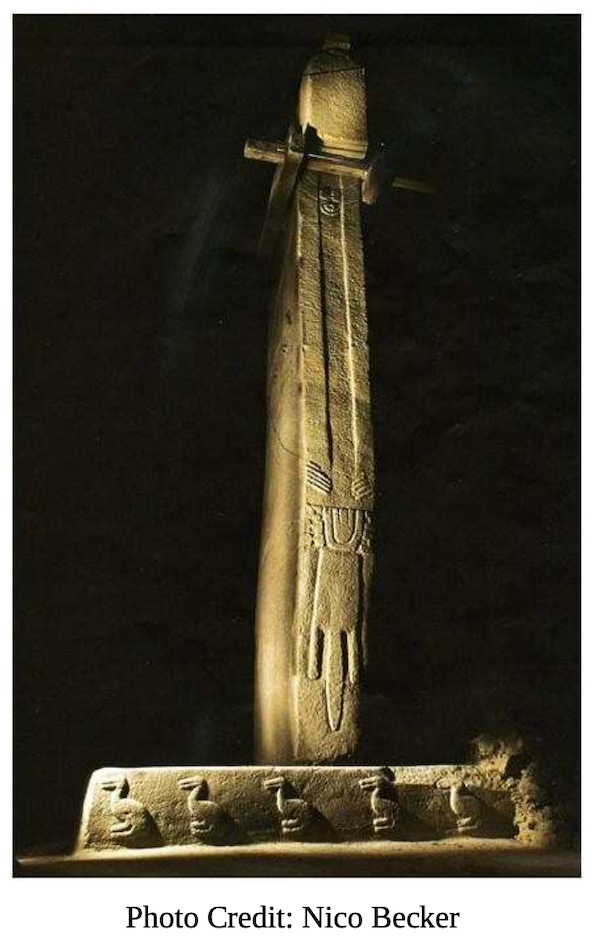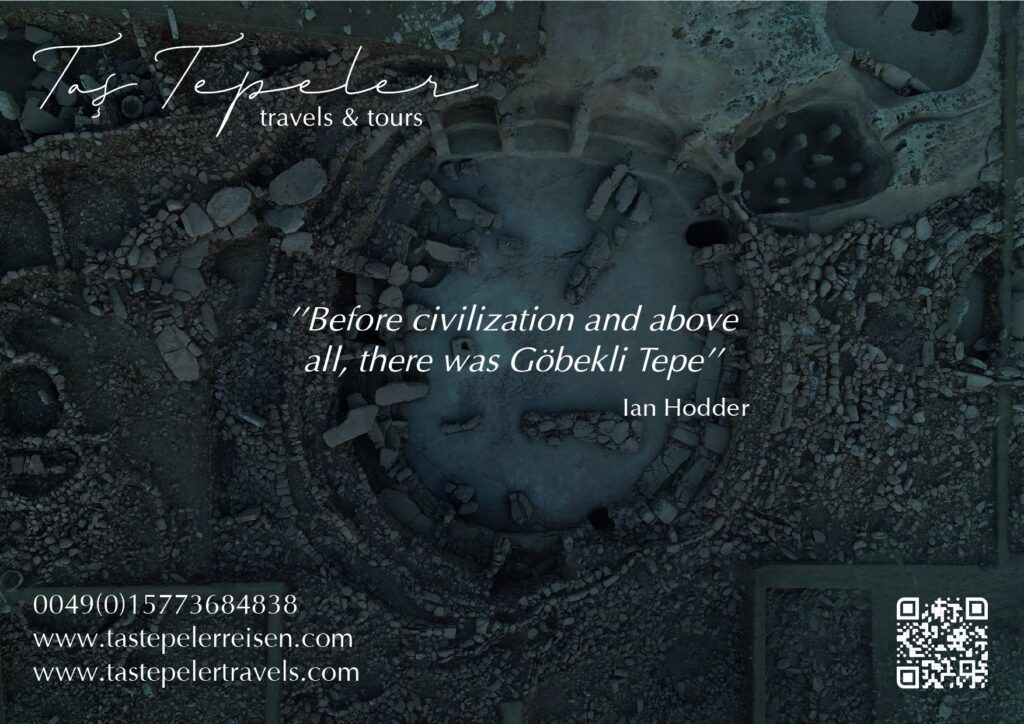
Many ancient compositions were overlaid upon a template of a Body. The Bodies need not have been human but could also be based on animals, insects, or even plants and inanimate objects. The “T” shape of the pillar was based on the basic gesture sign that represented, below1 (the surface). That, in itself may be enough of a clue to tell us that the Pillar’s form was not that of a human. The “T” Form was also compounded to include a horizontal rectangle and a vertical rectangle. These signs indicated a horizontal plane or place and a vertical plane or place (one having height and depth). Gobekli Tepe was a pre-pottery culture and as such it would not have been easy to shape the huge pillars in a true Body Form as it was in the later pottery cultures of the Nazca and Moche in Peru (discussed below). The makers of the pillars relied more on the more basic signs to describe the type of Body.


